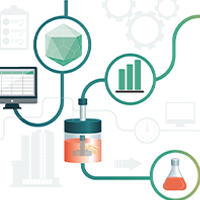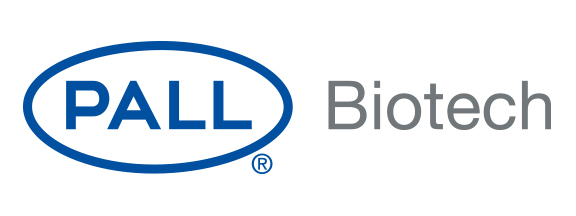Determining the optimal culture system for your scale up strategy
Cell & Gene Therapy Insights 2019; 5(3), 465–469.
10.18609/cgti.2019.051
Q What are the key considerations when selecting an expression system for viral vector production?
Clive: There are multiple expression systems available for making viruses, but ultimately there are three things that have to be considered when setting up your manufacturing system: scale, quality, and cost. Whatever expression system you choose will have to be able to produce high quality virus consistently, at the scale you need it. And all this has to be done at an affordable cost.
One important thing to think about is these items are not necessarily independent of each other. For example, for AAV production there are choices between using an insect cell-based system or a mammalian system. At first glance the insect cell-based system may seem to be more scalable as it is in suspension, but this needs to be looked at more closely. For example, there are some suggestions now that the virus produced in insect cells is not as potent as that produced in mammalian cells. So you would potentially have to move to a larger scale in order to produce equivalent product, which of course would have an impact on the cost.
It’s very important to consider all these factors when deciding on which expression system to use.
Q What are the critical quality attributes that need to be monitored for virus coming from upstream?
Marco: Analytics remain one of the most challenging aspects of viral vector manufacturing. While it is very easy to name the specific critical quality attributes, it is not always easy to develop or obtain an assay to validate them.
The most critical thing to measure is the amount of virus coming out of upstream, as it can in many cases determine the scale of the downstream process that you must put it through to purify your virus. But also bear in mind there are several different ways to quantify your virus and to measure different attributes of the virus. And it may not always be entirely clear how the output of these assays relates to eachother.
For example, using AAV – an ELISA assay can be used to measure the amount of intact capsid proteins in the process fluid. But this does not account for viral particles that are either empty or partially filled with DNA. PCR can be used to quantitate the amount of virus, and theoretically the ratio of these two numbers should be able to give you the quantity of full particles you are generating. But again this does not always match up. Others tests such as analytical ultra-centrifugation can be helpful to look specifically at empty to full capsid ratios.
Functional assays are also important, although they can be time consuming and have a large error associated with them.
Quantification assays that assess the turbidity of material coming out of a bioreactor can be important to ensure the downstream process is well designed to handle the upstream output.
Q What is your advice in terms of gauging how and by how much to scale up vector manufacturing, and when ideally should this be planned?
Clive: That’s a great question, and really very critical when determining the manufacturing system, and specifically what upstream system you’re going to use. The reason that the upstream is so critical is that it’s currently creating a bottleneck in viral vector manufacturing.
Given that we expect the clinical trial duration for gene therapies will be shorter than for conventional drugs, it’s important this planning starts as early as possible. Time is not necessarily on your side to develop a very elaborate or different process to what has been used in your preclinical studies.
At its simplest, the scale you require is a product of the number of patients you expect to treat per year, and the dose per patient, divided by the expected number of manufacturing batches per year.
But now let’s look at each of those 3 different components and talk about the different considerations around each of those.
First, on the number of patients that are expected to be treated, there’s something somewhat unique in some gene therapies. With conventional drugs it’s assumed the number of patients you treat will continue to rise for the lifetime of the drug.
With some gene therapies, specifically those that are targeting genetic diseases, the number of patients treated per year may peak early on, as the prevalence population is treated, leaving only the incidence population, which is usually quite small, to be treated each year after that. The implications for manufacturing are that the larger scale may be needed up front and early on in the product life cycle.
Moving on to the dose per patient. This will be determined during clinical trials, but you should be able to start with a reasonable assumption early on, and then work out various manufacturing scenarios based on the various doses you will be testing.
Finally, when it comes to the number of manufacturing runs per year, this is also a very important consideration, where a real balance has to be struck. On the one hand, it’s not ideal to be running a new batch every week, as this will require substantial amounts of planning and labor, and small slip ups on individual batches could be quite problematic in terms of ensuring continuity of supply.
On the other hand, if a process is run too infrequently then operator error starts to creep in, compromising batches and possibly leading to re-work. There must be a sweet spot found between these two extremes.
These are real considerations around each of the three factors in that overall calculation. But there are other considerations as well, such as the amount of material that needs to be set aside for retains and analytics. And this is not by any means a trivial amount.
After looking at these factors, selecting the right technology for manufacturing is important. For example, with rare diseases with a small dose, such as those in the eye, using simple multi-tray stacks for the upstream may be sufficient. However, for most in vivo gene therapies, where large doses are required, moving to a bioreactor is essential.
Bioreactors, and indeed all equipment used for gene therapy manufacturing is single-use. And this allows for greater flexibility, particularly when you consider the implications for treating a genetic disease, where you have that unique patient dynamic between the incidence and prevalence population.
The other thing to think about is to choose between adherence and suspension culture.
Q Can you share for us the main differences between suspension and adherent culture systems?
Marco: Traditionally viruses have been produced in adherent cultures, most specifically in simple systems such as a T-flask or scaled up to a multi-tray flask. As the industry is progressing at such a pace, it has reached its capacity at industrial scale. So it’s very difficult to scale it up, in terms of volumes needed for many indications.
Traditional biologics have relied on suspension culture, and much is known about scaling these systems in the context of monoclonal antibodies. Adapting these to viral vector production has certainly been done, and it does work. It can also be done by either scaling up the traditional triple transfection system, using HEK293 cells, or moving over to a more specifically suspension system using insect cells, such as ASAC9 or baculovirus.
We’ve already discussed some of the challenges associated with insect cell system; looking at scaling up the HEK293 system has proved a challenge for two main reasons.
The first is the plasmid DNA is one of the most costly raw materials in the process, and maintaining a cost effective ratio of plasmid DNA to cells at high volume can be difficult. While theoretically single-use systems can be scaled up to 2000 litres, in reality most processes are only currently cost
effective up to 500 litres.
Secondly, the cell specific productivity rate for cells in suspension can be much lower than cells grown in adherent format. In addition to resulting
in less virus, it also leads to lower quality virus, with more empty or partially filled capsules.
There are also fixed bed bioreactor systems such as the iCELLis® bioreactor which provides a large surface area up to 500 square meters, in a compact footprint, allowing scale up from adherent flask-based systems to a bioreactor rapidly, without significant lead time to adapt adherent processes to suspension cells. While it is difficult to compare adherent and suspension cultures directly, the largest version of the iCELLis bioreactor is approximately equal to a 1,000 litre suspension bioreactor. We routinely see iCELLis based processes generating more than 1016 of viral gms per batch, and even up to much greater than this depending on how the virus is quantified.
The iCELLis bioreactor is actually being used in several large scale in vivo gene therapies that are in late stage clinical trials and a number of companies are using this system for their commercial scale production.
Q Can you quantify the savings that can stem from migrating to a bioreactor system for upstream bioprocessing?
Clive: We’ve performed a lot of cost modelling around this, looking in particular at multi-tray systems versus things like suspension, and iCELLis based processes.
What we see often makes sense intuitively, but it’s very nice to be able to actually look at these down on paper. What we immediately see is when you look at the operational expenditure, so the amount you have to spend on consumables and labor per batch, it usually gets reduced by about 40-50%, when you move from a multi-tray system over to a bioreactor system.
In addition, we find the amount of upfront capital expenditure you have to put into a multitray system as you scale it up can just be quite extreme, and makes it a less viable option for scaling up these types of systems. We also see the footprint is dramatically reduced for example at around the 200 litre scale, which is something that can be used in preclinical or early stage clinical studies, you can use the same footprint that you would use for a multi-tray study at 200 litres and use it for a 1,000 litre study in any kind of bioreactor system. This means substantial space savings and given these processes are usually performed in a clean room, reducing that space use is a real cost saver. It also means any space you’ve used for your preclinical studies can then be used for your commercial scale manufacturing if you move to a bioreactor system. So lots of advantages to moving over to a bioreactor system.
Q What does the cost of goods comparison look like for the latest adherent and suspension culture systems?
Clive: I would say in aggregate there is approximately the same cost of goods depending on the bioreactor system you use, with maybe a small cost savings around the plasmid DNA, which is the most costly raw material when it comes to an adherent based system such as the iCELLis bioreactor.
There are other considerations when choosing your bioreactor system. We’ve spoken already about the potency of the virus that gets produced, depending on whether it’s an insect cell-based system or mammalian based system. We’ve spoken a little bit about the process development risks, which are usually lower for an adherent based system such as the iCELLis bioreactor. And then of course there’s the quality aspect as well, where there are some suggestions that an adherent based system can give higher quality virus.
Q Are there any other considerations when thinking about which type of technology to select for upstream?
Marco: Besides the total process solution we offer across upstream and downstream processes, it is also very important to have a consistent supply of whatever you are using throughout the process. Now on the upstream side in particular, we have seen challenges around the availability of multitray stacks in the past few months, and this had caused considerable problems for some companies that are trying to scale up their process.
Therefore, when selecting a technology it is very important to make sure you audit the supplier and develop and open and transparent relationshipwith them to make sure there are no surprises.
At Pall we have recently invested more than $3 million to ensure we have a robust supply chain behind the iCELLis technology. We have boosted our capacity four-fold, and ensure that we are able to do this long into the future.
This investment was needed to ensure we can adequately service the large and rapidly growing installed base of more than 100 bioreactors, installed worldwide at our customers. We also maintain very close contact with all of our customers to ensure that we all understand each other’s requirements.
Beside that it’s also important to make sure your supplier has a strong quality system in place, with change notification policies, to ensure that they have control over the manufacturing process, and notify you when changes are made.
AFFILIATIONS
Clive Glover
Senior Global Marketing Manager,
Cell & Gene Therapy,
Pall Corporation, UK
Marco Koppe
Global Product Manager
Cell Culture and Clarification
Pall Biotech
This work is licensed under a Creative Commons Attribution- NonCommercial – NoDerivatives 4.0 International License.





